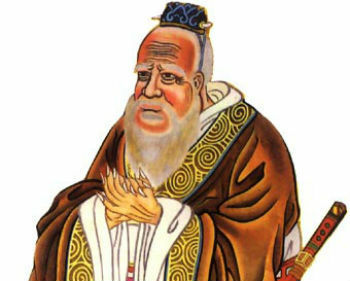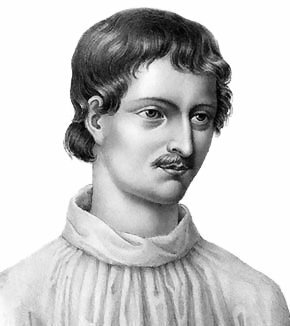Milton Santos was a geographer, intellectual, professor and one of the greatest Brazilian thinkers.
His studies innovated the area of urban geography which were fundamental for a new approach to the subject.
He revolutionized this field by addressing other themes that had not been addressed by descriptive geography until then, such as the importance and influences of territory for human beings.
Until today Milton Santos is considered the greatest geographer in Brazil and is also known and respected in several countries around the world.
Biography

Milton Almeida Santos was born in the Bahia city of Brotas de Macaúba on May 3, 1926.
He graduated in Law from the Federal University of Bahia in 1948. However, he did not get to practice the profession.
In France he did a Doctorate in Geography at the University of Strasbourg and in the late 1950s he returned to Brazil, when he created the Laboratory for Regional Studies.
He was a journalist and editor of the newspaper “A Tarde” from 1954 to 1964. With the military coup of 64, Milton went to live in France, when he practiced as a teacher there and elsewhere.
In addition to Brazil, he has worked as a university professor in several countries: Peru, Venezuela, United States, Canada, England, France and Tanzania.
In 1977, Milton returned to Brazil and continued teaching at universities. He was a professor of Human Geography at the Federal University of Rio de Janeiro (UFRJ) between 1979 and 1983.
Later, he passed the exam to become a professor at the University of São Paulo (USP), where he remained until he retired. After he retired he still continued writing and researching.
In 1994, Milton received the "Vautrin Lud International Geography Award", considered the highest award in the field.
In 1997, he received the title of "Professor Emeritus of the University of São Paulo". In addition, he was awarded the title of "Doctor Honoris Causa" in twelve Brazilian universities and seven foreign universities.
Milton died on June 24, 2001 in the city of São Paulo, victim of cancer.
Construction
Milton Santos was an avid reader, critic and writer. He has written about 40 books of which the following deserve mention:
- Regional Studies and the Future of Geography (1953)
- Downtown Salvador (1959)
- The City in Underdeveloped Countries (1965)
- For a New Geography (1978)
- The Geographer's Work in the Third World (1978)
- Urban Poverty (1978)
- Divided Space (1979)
- Unequal Urbanization (1980)
- Urban Geography Manual (1981)
- Thinking the Space of Man (1982)
- Space and Method (1985)
- The Citizen's Space (1987)
- Metamorphoses of Inhabited Space (1988)
- Fragmented Corporate Metropolis (1990)
- The Brazilian Urbanization (1993)
- Technique, Space, Time (1994)
- The Nature of Space (1996)
- For Another Globalization (2000)
- Territory and Society (2000)
Main thoughts
Milton advocated a new approach to the field of geography. In the area of critical and human geography, the intellectual deepened his studies in various themes such as citizenship, territory, demography, migrations and urban geography.
He also focused on the local reality and on the globalization process combined with the human aspect behind geographic studies. Thus, he acquired a critical stance towards the capitalist system.
With his studies, Milton managed to expand the area of geography and give greater importance, for example, to the theme of territory and urban development.
In this sense, Milton Santos included the less favored populations, giving a new look to the space of cities.
Documentary
Filmmaker Silvio Tender directed the documentary “Meeting with Milton Santos: the global world seen from the sidefrom here" in 2006.
In this video, we can understand the intellectual's attitude towards the capitalist system and the globalized world. Milton presents the concept of "Globalitarianism" formed by the union of terms: globalization and authoritarianism.

Phrases by Milton Santos
- “Brazil has never had citizens, we, the middle class, we don't want rights, we want privileges, and the poor don't have rights, there isn't, therefore, citizenship in this country, there never was!”
- “Brazilian geography would be different if all Brazilians were true citizens. The volume and speed of migrations would be smaller. People are worth little where they are and run off in search of the value they don't have.”
- “There are only two social classes, those who do not eat and those who do not sleep for fear of the revolution of those who do not eat.”
- “The strength of alienation comes from the fragility of individuals who can only identify what separates them and not what unites them.”
- “To be black in Brazil is often to be the object of a slanted eye. The so-called good society seems to consider that there is a predetermined place, down there, for blacks.”
Entrance Exam Exercises with Feedback
1. (UFPA) "The requalified spaces meet, above all, the interests of the hegemonic actors of the economy, culture and politics and are fully incorporated into the new world currents. The technical-scientific-informational environment is the geographic face of globalization.”
(SAINTS, Milton. The nature of space: technique and time, reason and emotion. São Paulo: Ed. Hucitec, 1997, 2. ed., p. 191.).
Considering the text is right affirm about the globalization process:
a) The information systems that exist today, despite being advanced, do not yet allow image exchanges, sounds, data and voice in real time around the world, which promotes a relative distance between spaces regional.
b) After the wave of technological innovation that lasted from World War II until the 1970s, a new path, the technoscientific revolution, based on the emergence of microelectronics and the transmission of information, reorders the space global.
c) One of the characteristics that marked the “information age” from the beginning was the use of more durable technologies that are difficult to replace.
d) According to the new world order, it is no longer military power that makes it impossible to circulate information in real time, but economic and technological power.
e) The cultural force in the westernized world prevents more and more people from drinking the same soft drinks, eating in the same networks cafeterias, listen to the same types of music, watch the same movies, and use the same world wide web to Communication online.
Alternative b: After the wave of technological innovation that lasted from World War II until the 70s, a new path, the technoscientific revolution, based on the emergence of microelectronics and the transmission of information, reorders the space global.
2. (UEL) "In early history, there were few man-made forms, and those established with a sense of permanence or greater impact were quite small. Space would resemble the proverbial canvas waiting for the ink of human history. In this respect, the alternatives were endless. However, each object remains in the landscape, each cultivated field, each open path, mine shaft or dam constitutes a concrete objectification of a society and its terms of existence. Future generations cannot help but take these forms into account. The cities and transport networks of modern times bear witness to such a heritage, which stands in the way of the future.”
(SAINTS, Milton. Space and method. São Paulo: Nobel, 1992. P. 54.)
Based on the text, consider the following statements.
I. In the landscape produced by societies, distinct temporalities coexist that are manifested in the diversity of forms and artifacts.
II. The increasing density of landscapes makes human societies lose the possibility of bequeathing concrete records of their terms of existence.
III. Socially created shapes and objects arranged in space play an active role, as they facilitate or inhibit social transformations.
IV. For future generations, the landscape will resemble a blank canvas waiting for the ink of human history.
Only the statements are correct:
a) I and II.
b) I and III.
c) III and IV.
d) I, II and IV.
e) II, III and IV.
Alternative b: I and III.
3. (UFPI) For geographer Milton Santos, landscape is “the realm of the visible, what the sight embraces. It is not only made up of volumes, but also colors, movements, odors, sounds (...). The dimension of the landscape is the dimension of perception, which reaches the senses.”
(Metamorphosis of the Inhabited Space. São Paulo: Hucitec, 1996, p.61-62).
Considering this statement, review the following sentences:
I. The simple observation of the landscape does not provide us with explanations about the functions of buildings, the organization of production systems and the technologies used.
II. Only the natural elements are enough to understand the geographic space, visible through the landscapes.
III. When considering the natural elements, the functions of built spaces, the relationships and the economic, social and political structures, we are dealing with geographic space and not just sights.
IV. Geographical landscapes involve not only natural aspects, but also visible aspects of the culture of societies.
Is correct only what is stated in:
a) I and II
b) II and III
c) II and IV
d) I, II and IV
e) I, III and IV
Alternative e: I, III and IV
Read too:
- Geographic space
- urban geography
- globalization



